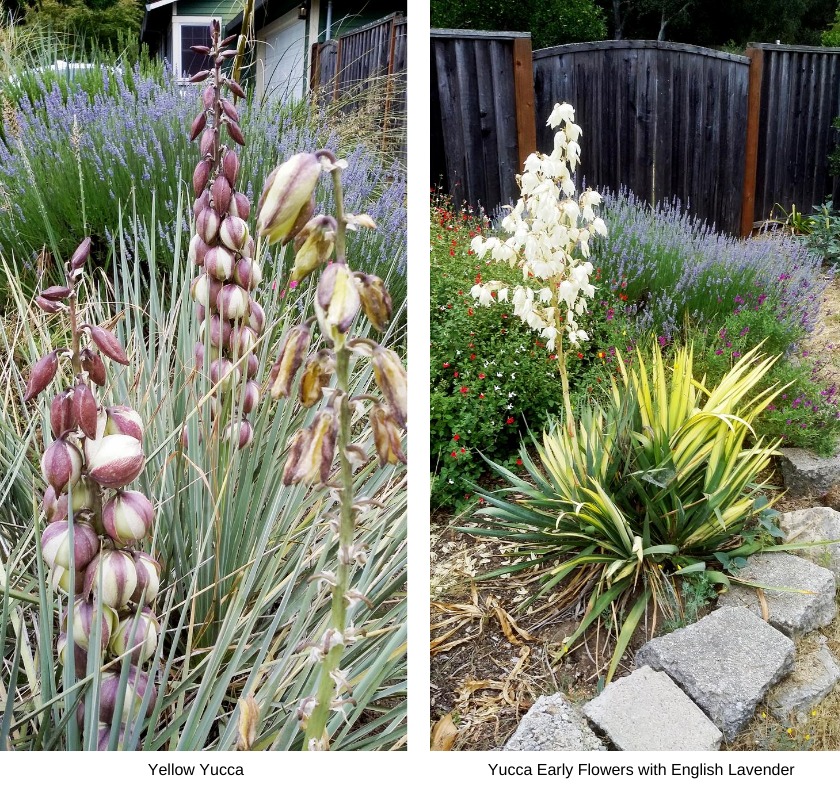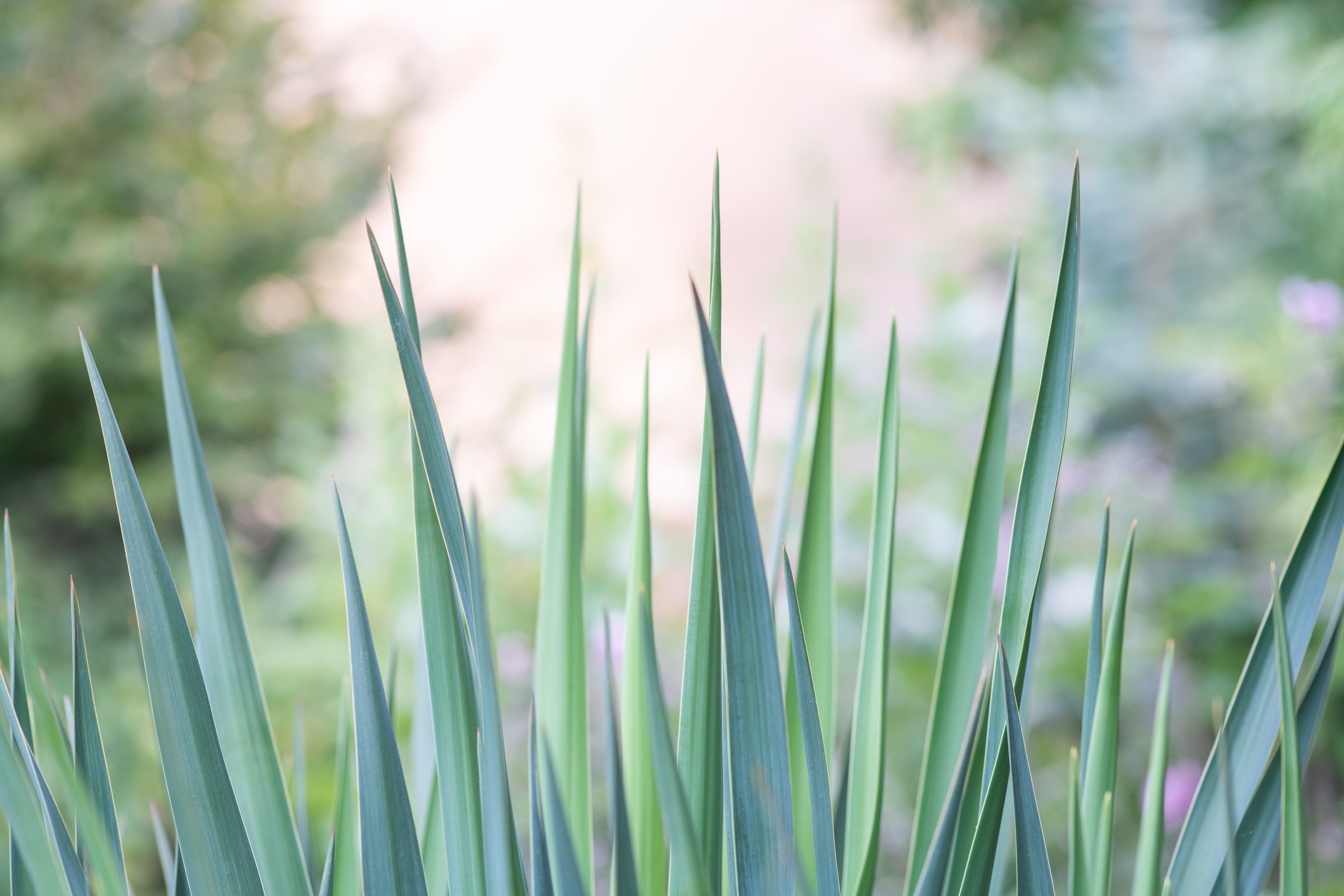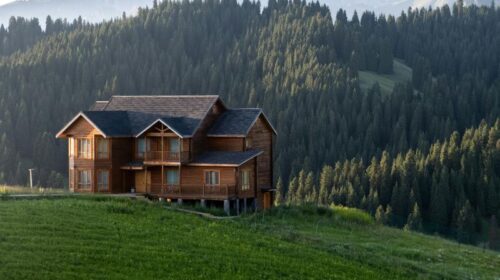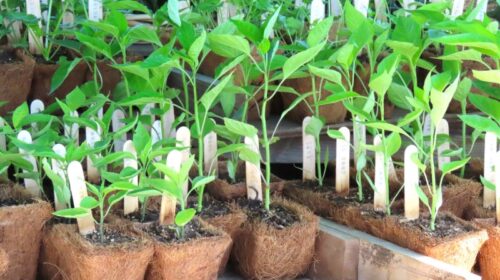Yuccas and Other Spiky Plants
By Uncle Skip, the Ben Lomond Gardener
Yuccas. An easy, overused California garden cliché? A lazy, drought-tolerant landscape filler? Something to plant at the far end of the property where the hose doesn’t reach?
Maybe, but I don’t care. I love Yuccas. I love the sharp, geometric architecture, the symmetry of the foliage clusters as they spread, and the primitive-looking, creamy colored flowers on long, boney stalks. I favor the “wild” look in the garden and Yuccas have it. In addition to their gorgeous angularity, many of these plants have very persuasive spines. This has the salutary effect of discouraging neighborhood dogs who might otherwise make unwanted deposits, when their heedless owners don’t bother to bring a bag. Not something I wish to track indoors on my flip-flops.
My current favorites are Yucca glauca (soapweed) and Yucca filamentosa “Color Guard.” Y. glauca spines are plenty sharp. Never, ever work around this plant or any cactus without protective eyewear. I also recommend gloves and long sleeve shirts. My eyes are, thankfully, intact, due to rigorous observance of the first rule, but my arms bear many reminders of my laxity regarding the second. Y. glauca will grow and spread. Each year, new sprouts “calve” off the old plant, producing their own tight, geometric whorl of spiny foliage. This may be what you want, but if not, it is not very difficult to (carefully) cut them out with loppers. Y. filamentosa can be pruned back in the same manner, much more easily because the leaves are not very stiff and the spines not very sharp. Y. glauca sports a light, soft, grey-green foliage. Its flowers, if that isn’t too fancy a word, are otherworldly. Bell-shaped balls of cream petals with milk chocolate-brown edging radiating out from the calyx, hanging from a long, woody stem, up to about three feet in height. The blooms don’t last long, and the remaining stalk is not for gardeners of delicate aesthetic sensibility. It can be removed immediately without harm to the plant.
On Y. filamentosa, the creamy bell-shaped balls open into bold, off-white flowers. Lovely! Yuccas are pollinated by night-flying moths, so you won’t see bees buzzing around them. Not to worry. I have another spiky plant selection below for that very thing.

The genus Nolina has a number of species that should do quite well in SLV gardens, under the same dry conditions as Yuccas. It’s a rugged, primitive looking plant that would be right at home in Jurassic Park. They are much bigger than most Yuccas, so give them plenty of room. The foliage varies in shape with the species of origin, but all are long, narrow, and stiff. Many have sharp edges that will get your attention quickly if you aren’t careful. Nolinas, sometimes called “Bear Grass,” can develop at the trunk about nine inches thick and leaves that extend rigidly out about three feet. A huge, angular, boney flower stalk erupts from the basal rosette every other year or so, producing tiny, light cream-white blossoms of little visual interest but of utter fascination to bees, who happily cover them during the blossom’s’ brief (two week) stay. Plant them where you are certain you want them. Getting a large, mature specimen out is a trial (one of my purposes, here, is to spare you my epic blunders). Look for Nolinas at the UCSC Arboretum.
Dasylirion (Desert Spoon or “sotol”) is another spiky choice. Dasylirion originates in the Mexican highlands and may not be as frost-hardy as Nolina and the Yuccas mentioned above. Try them in big pots, so you can move them under the eaves in winter. I got lazy last winter and left the bigger one out on the patio. It came through, undeterred. It’s quite festive in its Talavera pot, a sharply defined wonder of natural symmetry.
Uncle Skip writes about gardening from his home in beautiful Ben Lomond, California.




